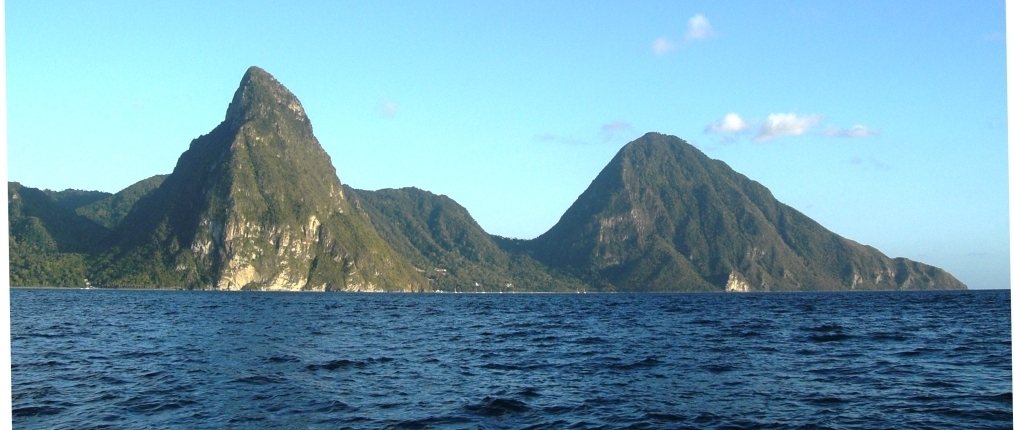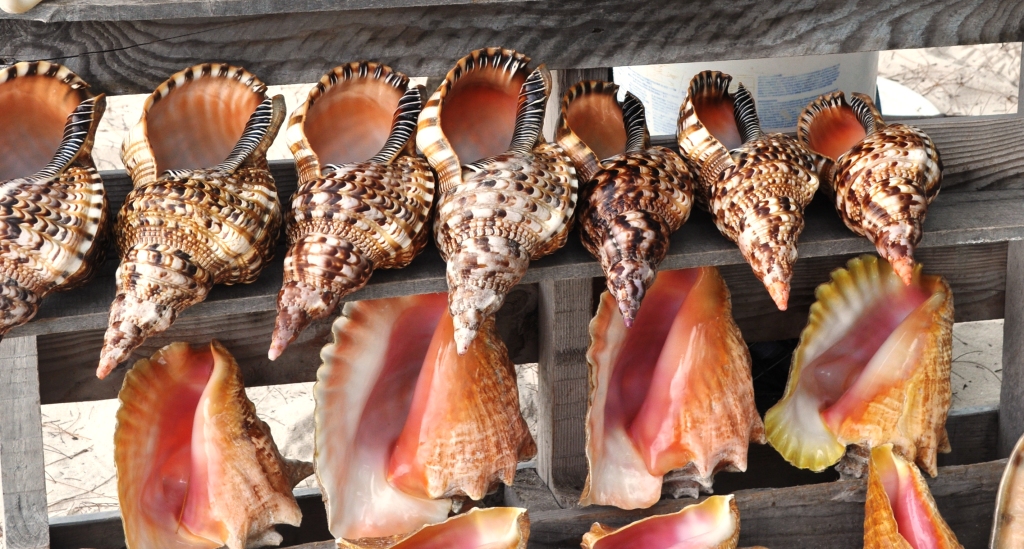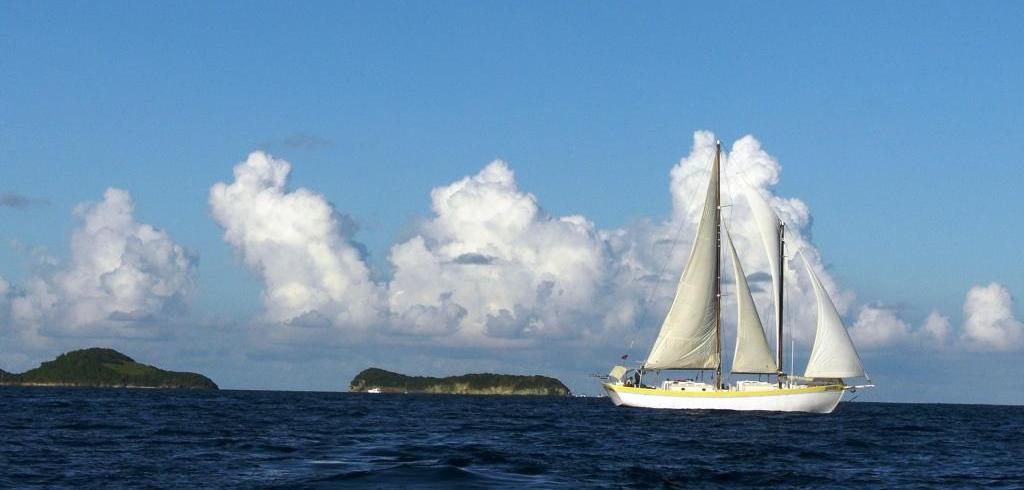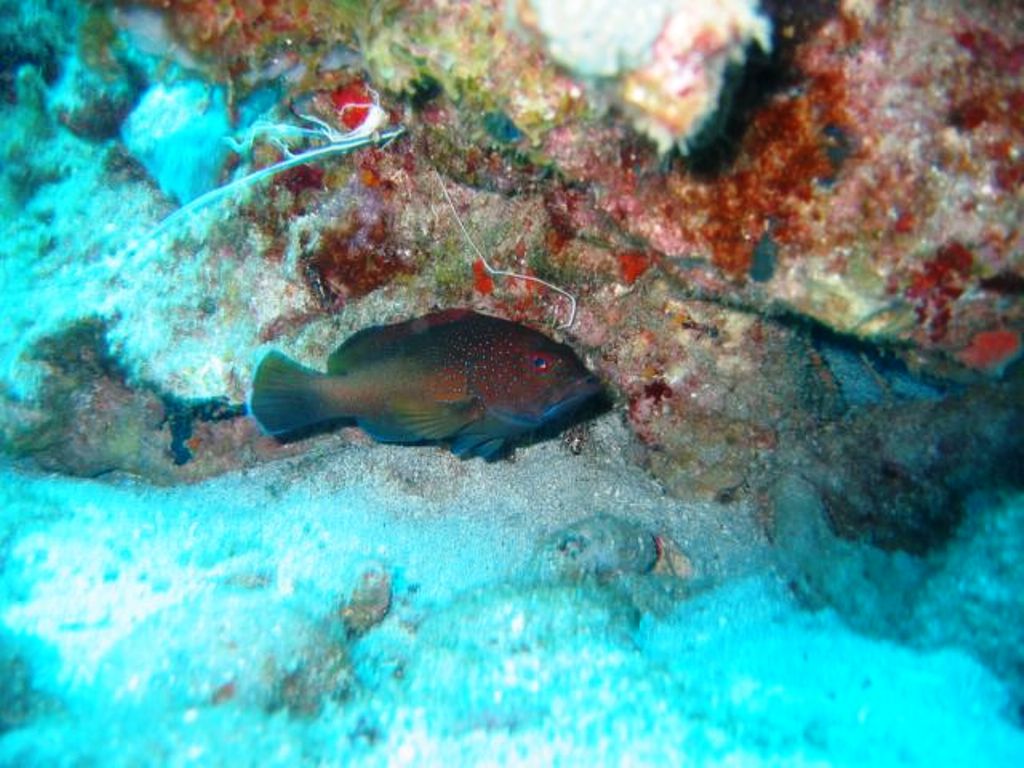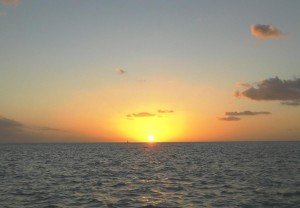
“Look! It’s happening! Wait, watch for it!” The excitement on the catamaran is palpable, and we strain our eyes to the horizon where the last tiny pinpoint of an orange sun is just about to dip below the horizon. We are hoping to see the legendary green flash — the momentary burst of light that sometimes accompanies a pristine sunset, usually over the ocean.
“There! There! Did you see it?” “I saw it!” My small group is a-twitter with excitement, yet I have to sadly admit that stare as hard as I could, I didn’t see anything remotely green. Did they see it because of the power of suggestion? Did I blink my eyes at the wrong second?
In Your Bucket Because….
- Lots of other places have sunset sails — but they don’t have the Pitons.
- It’s a relaxing way to end a day of rainforest activities or water sports.
- Good for: Anyone who needs a break, although bring a sea-sickness patch if you are prone to motion sickness.
We are on a sunset champagne sail out of Soufrières Bay, located just north of Lucia’s Pitons, the pair of triangular mountains that are this tiny island nation’s signature landmark.
The champagne sunset sail is a clichéed hallmark of tropical vacations, and its typical itinerary is fairly basic: Sit on the Catamaran. Bounce on the trampoline-style sitting net if you don’t mind getting wet. Drink champagne. Come back.
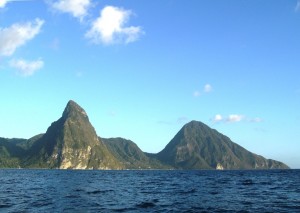
But here, the catamaran sail is especially pleasant: We’re are lucky enough to have perfect weather, mild temperatures and a clear sky. But it’s the scenery that makes this activity — in this particular place — a must-do on St. Lucia. You’d have to go a long way to find a more dramatic backdrop to a sunset sail than the oceanside view of the Gros and Petit Pitons.
The Pitons
You’ll see the Gros and Petit (big and little; 771 and 743 meters, respectively) Pitons everywhere on St. Lucia. (Ironically, the big mountain is said to be easier to climb than the smaller mountain). These two volcanic plugs grace magazine covers, books, postage stamps, beer bottles (of the local brew, named Piton) — even the $50 eastern Caribbean banknote. They — and the volcanic, marine, and forest areas surrounding them, are also a UNESCO World Heritage site. The undersea ecosystem is a rich coral reef: On a sailing trip, you might be lucky enough to see hawksbill turtles or, farther out, whale sharks and pilot whales.
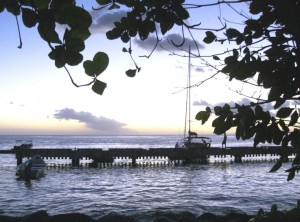
We sail around the base of the mountains, which from the ocean look far higher than their elevation of about 2500 feet. And much much steeper: I stare at the mountains, trying to figure out how anyone climbs them. Or then again, maybe the best way to see them is precisely from the vantage point I now enjoy: looking up from the sea, watching them change to their night-time colors, with champagne in hand.
Practicalities
- Soufrière is on the west side of St. Lucia, about 2/3 of the way south.
- Reservations are recommended. Our hotel (Coconut Bay, an all-inclusive on the southern tip near the Hewanorra International Airport) arranged the catamaran trip for us, including transfer. Arrangements can be made through your hotel or in Soufrière itself.
- Single-hulled sailboats and catamarans are both available; the stability of the double-hulled catamarans makes for a particularly relaxing voyage.
